In 1921, a team of Canadian researchers discovered the molecule insulin and ignited a century of ground-breaking innovations in diabetes care that have since saved countless lives.
Today, we are fortunate to have better medicines than ever, yet the number of people living with diabetes continues to grow at an alarming rate, placing a substantial burden on individuals, families and societies.
Explore the journey

Insulin: A breakthrough innovation1
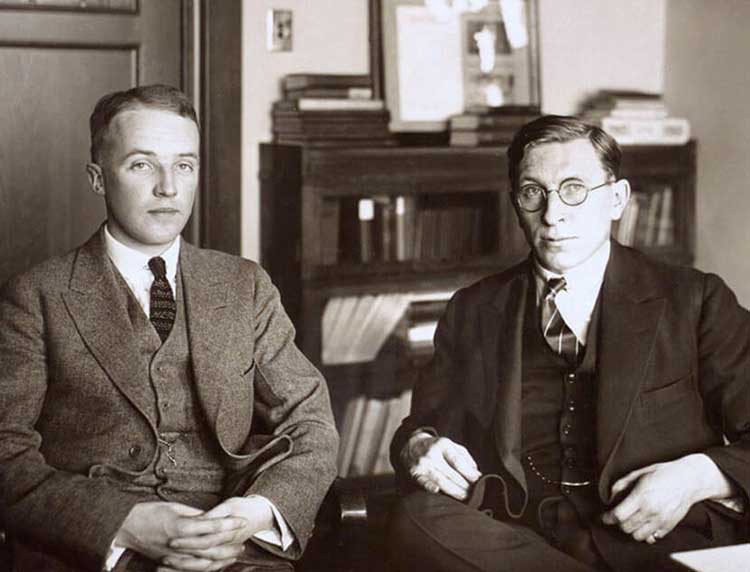
Frederick Banting and Charles Best at the University of Toronto.2
Insulin: A breakthrough innovation1

Frederick Banting and Charles Best at the University of Toronto.2
First life saved by insulin4
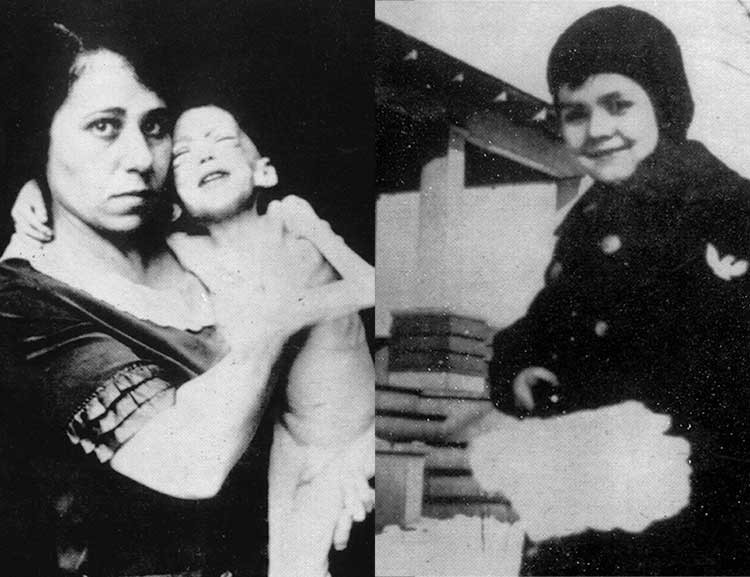
Before and after images of a child with type 1 diabetes.
First life saved by insulin4

Before and after images of a child with type 1 diabetes.
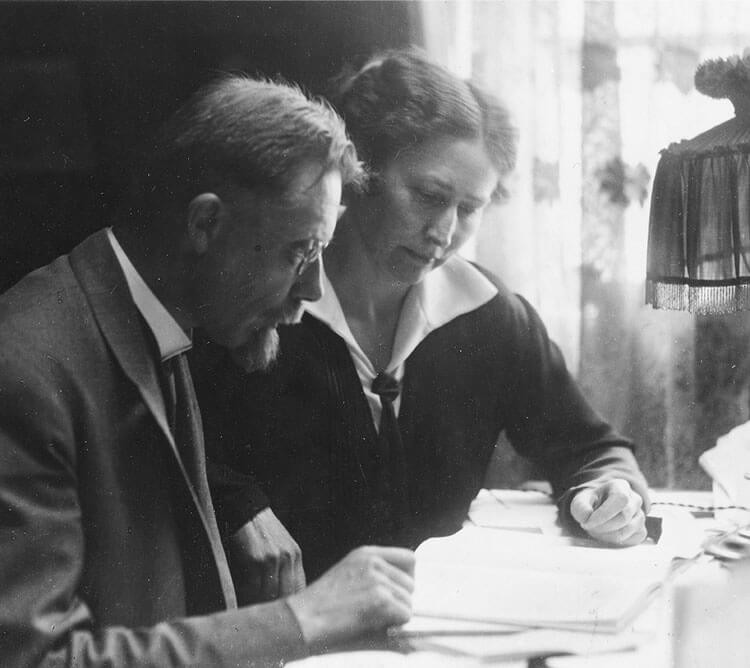
August and Marie Krogh
August Krogh brought insulin to Scandinavia1
August Krogh brought insulin to Scandinavia1

August and Marie Krogh
Novo Nordisk insulin production in the 1930s.
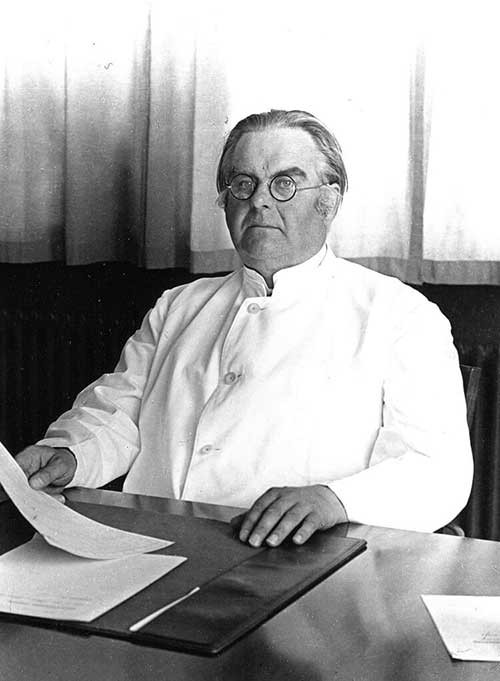
Hans Christian Hagedorn

Hans Christian Hagedorn
Novo Nordisk insulin production in the 1940s.
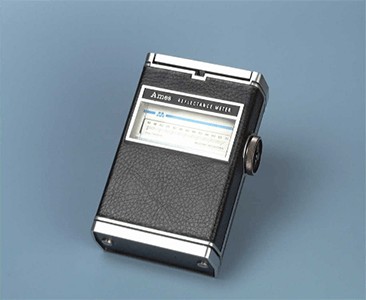
Ames Reflectance Meter
Portable glucose meter simplifies diabetes monitoring
Portable glucose meter simplifies diabetes monitoring

Ames Reflectance Meter
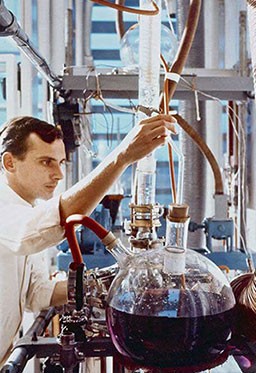
Laboratory in Bagsværd, Denmark.
HbA1C in clinical practice
HbA1C in clinical practice

Laboratory in Bagsværd, Denmark.
A new era in diabetes understanding
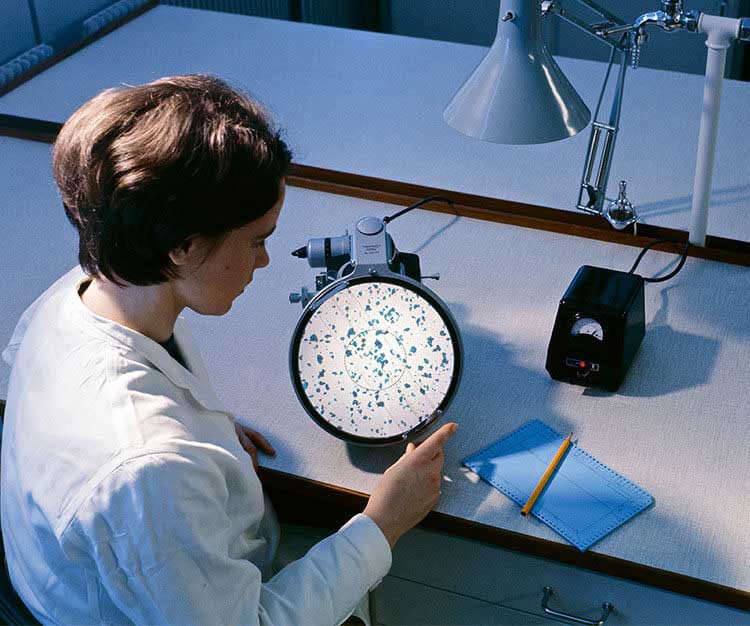
A new era in diabetes understanding

First commercially available human insulin
First commercially available human insulin
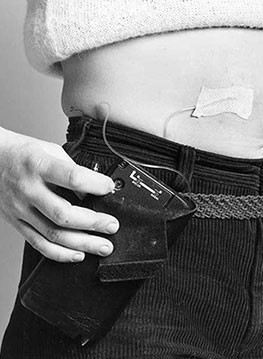
Patient with an insulin pump.
First Medtronic MiniMmed pump released.7
First Medtronic MiniMmed pump released.7

Patient with an insulin pump.
Easier and more accurate management – the first insulin pen9
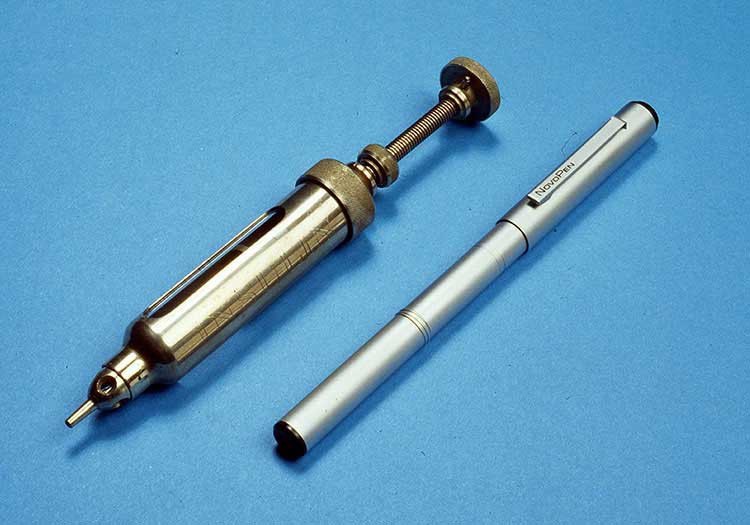
The Novo Syringe from 1925 and the first NovoPen® device from 1985.
Easier and more accurate management – the first insulin pen9

The Novo Syringe from 1925 and the first NovoPen® device from 1985.
Introduction of first generation insulin analogues
Introduction of first generation insulin analogues
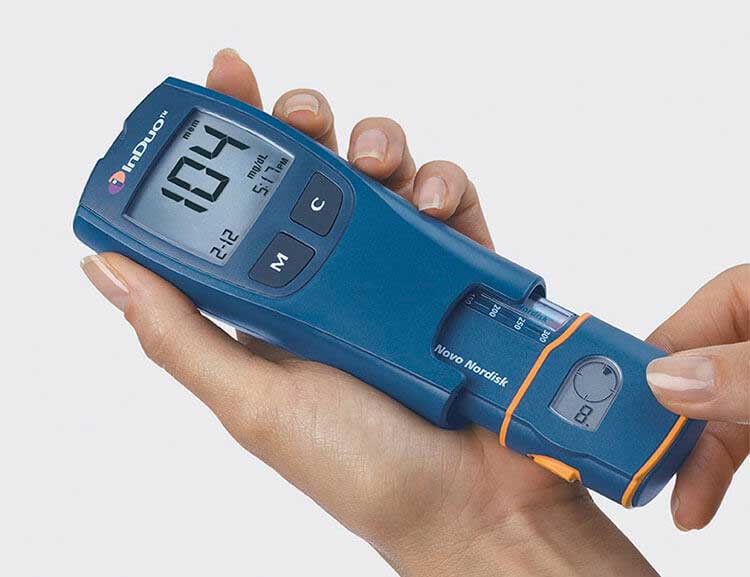
InDuo combination insulin delivery device and blood sugar monitor from 2001.
First CGM system approved
First CGM system approved

InDuo combination insulin delivery device and blood sugar monitor from 2001.
Beyond insulin: new treatment options for type 2 diabetes
Beyond insulin: new treatment options for type 2 diabetes
Novo Nordisk R&D liraglutide GLP-1, 2008.
Introduction of new generation insulin analogues
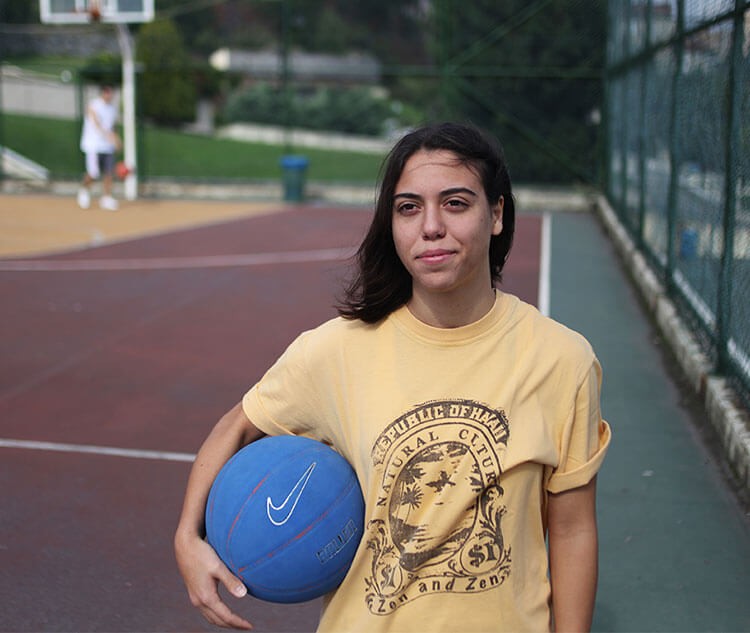
Ayşe Naz Baykal has type 1 diabetes and lives in Turkey.
Introduction of new generation insulin analogues

Ayşe Naz Baykal has type 1 diabetes and lives in Turkey.
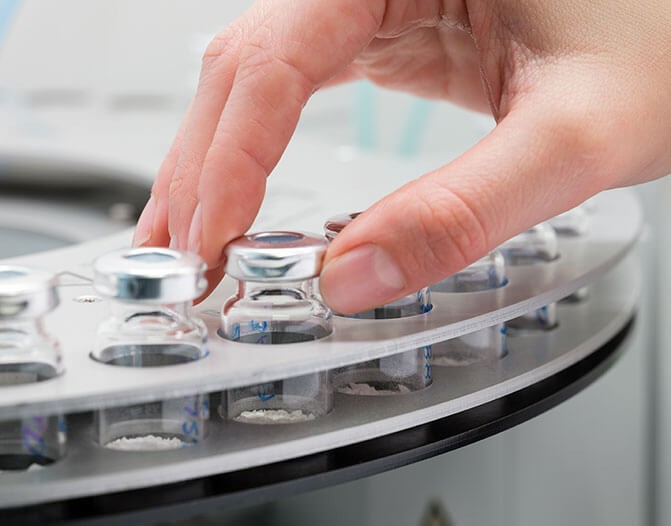
Discovering and developing new protein and peptide-based therapies.
First oral GLP-1 treatment for type 2 diabetes
First oral GLP-1 treatment for type 2 diabetes

Discovering and developing new protein and peptide-based therapies.
Mandy Marquardt has type 1 diabetes, rides for Team Novo Nordisk and lives in the USA.
2021 and beyond
What’s next?3
2021 and beyond
What’s next?3
1- Vecchio I, Tornali C, Bragazzi NL, Martini M. The discovery of insulin: an important milestone in the history of medicine. Frontiers in endocrinology. 2018;9:613.
2- Marshall SM. Celebrating 100 years of insulin. Diabetologi. 2021;64:944 -946.
3- American Diabetes Association (ADA). The History of a Wonderful Thing We Call Insulin. Available at: https://www.diabetes.org/blog/history-wonderfulthing- we-call-insulin. Last accessed at: 6/7/2021.
4- White JR. A brief history of the development of diabetes medications. Diabetes Spectrum. 2014 May;27(2):82-6.
5- Boutati EI, Raptis SA. Self-monitoring of blood glucose as part of the integral care of type 2 diabetes. Diabetes Care. 2009;32(suppl 2):S205-10.
6- 100 years of diabetes research. Understanding animal research. Available at: https://www.understandinganimalresearch.org.uk/news/100-years-of-diabetes-research/. Last accessed: 17.1.2021.
7- Insulin Pumps . Diabetes.UK available at : https://www.diabetes.co.uk/insulin/Insulin-pumps.html Last accessed: 2/2022.
8-Kesavadev J, Das AK, Unnikrishnan R, Joshi SR, Ramachandran A, Shamsudeen J, Krishnan G, Jothydev S, Mohan V. Use of insulin pumps in India: suggested guidelines based on experience and cultural differences. Diabetes Technology & Therapeutics. 2010;12(10):823-31.
9-Selam JL. Evolution of diabetes insulin delivery devices. Journal of diabetes science and technology. 2010 May;4(3):505-13.
10- Rex J, Jensen KH, Lawton SA. A review of 20 years’ experience with the Novopen® Family of Insulin Injection Devices. Clinical drug investigation. 2006 Jul;26(7):367-401.
11- Hirsch IB. History of Glucose Monitoring. https://professional.diabetes.org/sites/professional.diabetes.org/files/media/db201811.pdf. Last accessed 12.12.2021.
12- Tran KL, Park YI, Pandya S, et al. Overview of glucagon-like peptide-1 receptor agonists for the treatment of patients with type 2 diabetes. American health & drug benefits. 2017;10(4):178.
13- Mathieu C, Martens PJ, Vangoitsenhoven R. One hundred years of insulin therapy. Nature Reviews Endocrinology. 2021 Dec;17(12):715-25.
14-Lane W, Faurby M, Husemoen LL, Markovich DL, Rathor N, De Block C. Glycaemic Control in People with Diabetes Starting Treatment with Fast-Acting Insulin Aspart: a US Database Study. Diabetes Therapy. 2021;12(12):3067-77.
15- FDA approves first oral GLP-1 treatment for type 2 diabetes. FDA. Available at: https://www.fda.gov/news-events/press-announcements/fda-approves-first-oral-glp-1-treatment-type-2-diabetes#:~:text=The%20U.S.%20Food%20and%20Drug,along%20with%20diet%20and%20exercise. Last accessed: 20.2.2022.
